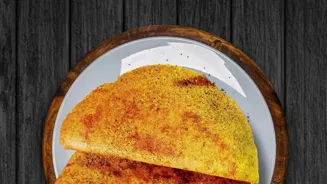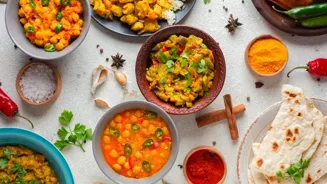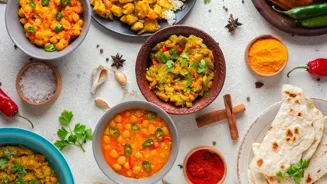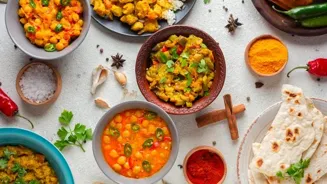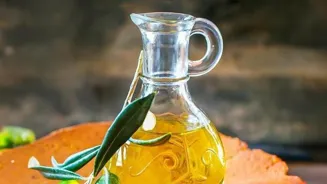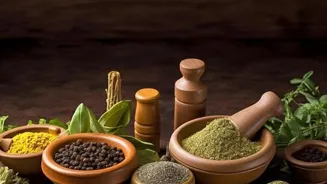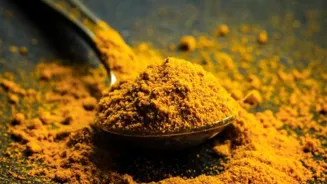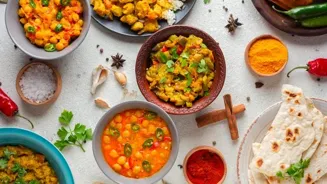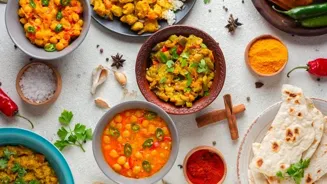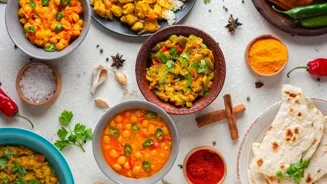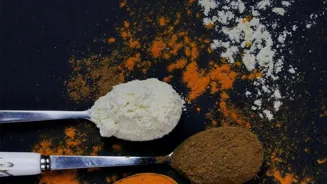Unveiling the Secrets of Perfect Masala Dosa! Dive into the art of crafting this South Indian delight at home
Masala Dosa, the pride of South Indian cuisine, is enjoyed across India and even globally. Its
crispy, golden exterior and flavorful potato filling make it a popular breakfast, lunch, or dinner option.
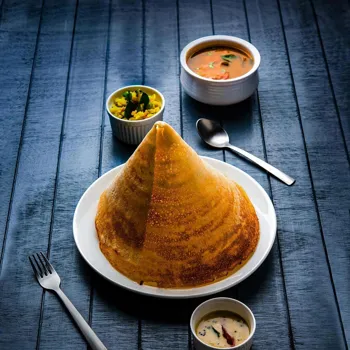
But achieving that authentic taste requires using the right ingredients and mastering the traditional techniques. Don't worry, it's not as difficult as some fancy restaurants make it seem!
This guide breaks down the eight essential ingredients you need to create a truly mouthwatering Masala Dosa at home. We'll delve into each ingredient, offering tips and tricks to ensure your dosa is the talk of the town!
Get ready to impress your family and friends with your newfound culinary skills!
Main peg: Perfecting the dosa batter is key for delicious Masala Dosa
First and foremost, the foundation of any good Masala Dosa is the dosa batter. This requires a perfect blend of urad dal (split black lentils) and rice. Typically, you'll want to use a ratio of about 1:3 or 1: 4 – one part urad dal to three or four parts rice.
The proportions can vary slightly depending on the type of rice you use; some prefer a little more urad dal for a softer dosa. When selecting urad dal, opt for the whole, unskinned variety for the best flavor and texture.
Rice choices often include parboiled rice (idli rice) or even regular raw rice. Remember to wash both the urad dal and rice thoroughly before soaking them. This removes any impurities and ensures cleaner fermentation.
Soaking is crucial; aim for at least 4-6 hours, or even overnight, for optimal results. This softens the grains, allowing for a smoother batter when ground. It's also advised to soak urad dal and rice separately.
Potatoes are the key to flavorful Masala Dosa filling
Next we go for the backbone of any Masala Dosa filling – the potatoes! Use a variety that boils well and does not become too mushy or hold too much water. Generally, medium-sized potatoes are ideal.
The spices are what truly bring the aloo masala to life, beginning with mustard seeds that will pop in hot oil and infuse it with an earthy flavor. Add ginger and garlic, which introduces a pungent fragrance and adds a subtle kick. Then comes green chillies that provide the heat.
Curry leaves are an absolute must – their distinct aroma is synonymous with South Indian cooking. Turmeric powder introduces and adds colour – a beautiful golden hue – and subtle earthy depths. Onion contributes a sweet undertone. Finally, salt adds a balancing factor through everything.
Making Masala Dosa: a step-by-step guide to crafting the perfect potato filling
Creating the Masala Dosa is a labour of love. Begin by preparing the potato filling. Boil the potatoes until they are tender but not mushy. Once cooked, peel and lightly mash them; leaving small chunks adds texture to the filling. In a pan, heat oil and add mustard seeds.
Once they splutter, add the urad dal and chana dal, if using, and sauté until they turn golden brown. This adds a delightful crunch to the filling. Next, add the chopped onions, ginger, garlic, green chillies, and curry leaves. Sauté until the onions are translucent.
Add the turmeric powder, asafoetida, and salt. Mix well and then add the mashed potatoes. Mix everything thoroughly, ensuring the spices are evenly distributed. Cook for a few minutes, allowing the flavors to meld together. Finally, garnish with chopped coriander leaves for freshness.
Oil or ghee essential for crispy dosa; choose quality tawa
Now, moving onto the star ingredient: oil or ghee. A generous application of oil or ghee is essential for achieving that perfectly crispy, golden-brown dosa. Ghee, clarified butter, imparts a rich, nutty flavor that elevates the entire experience.
However, you can also use vegetable oil, sunflower oil, or even coconut oil, depending on your preference. The key is to use enough of it. As you pour the batter onto the hot tawa or griddle, drizzle oil or ghee around the edges. This helps the dosa to crisp up and prevents it from sticking.
Don't be shy with the oil or ghee; it's what gives the dosa its signature texture and taste. It is also important to choose a good quality tawa. A well-seasoned cast iron tawa is ideal, but a non-stick tawa can also work if properly heated and oiled.
Fresh coriander leaves enhance dosa with vibrant freshness
The next step is the all important Coriander leaves. A handful of freshly chopped coriander leaves adds a vibrant burst of freshness to both the potato filling and the finished dosa. Its bright, citrusy notes complement the earthy spices and rich flavors of the masala.
Sprinkle coriander leaves generously over the potato filling before placing it on the dosa. You can also garnish the finished dosa with a sprinkle of coriander leaves for an extra touch of freshness.
If you're not a fan of coriander, you can substitute it with mint leaves for a slightly different, yet equally refreshing, flavor profile.
Sambar and coconut chutney elevate Masala Dosa's flavor profile
Sambar and coconut chutney are the mandatory accompaniments for Masala Dosa. Sambar, a lentil-based vegetable stew, and coconut chutney, a creamy dip made with fresh coconut, green chilies, and spices, complement the crispiness of Dosa. Some prefer tomato chutney and you can always try them.
Ultimately, mastering the art of Masala Dosa is all about practice and experimentation. Don't be afraid to adjust the ingredients and techniques to suit your taste preferences. The most important thing is to have fun and enjoy the process of creating this delicious South Indian classic.
So, gather your ingredients, put on your apron, and get ready to embark on a culinary journey that will tantalize your taste buds and impress your friends and family!
AI Generated Content. Glance/InMobi shall have no liability for the content